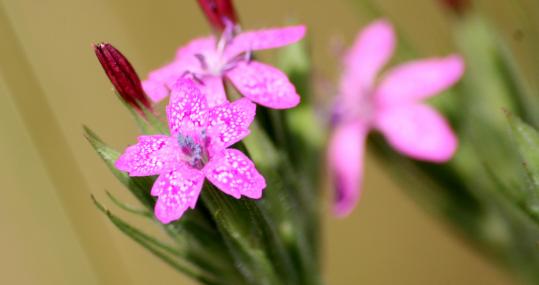The Deptford Pink has declined rapidly in range and is now known to inhabit only about 15 sites in the UK, mainly in the south. It prefers light, sandy, acidic soils and requires open conditions to grow well. It can be found on disturbed ground, such as tracks and field edges, along hedgerows and in dry pasture.
The Deptford Pink has suffered serious declines over recent years mainly due to the intensification of agriculture and removal of hedgerows. The Wildlife Trusts are working closely with farmers and landowners to promote wildlife-friendly practices to help this and many other species. We are working towards a 'Living Landscape': a network of habitats and wildlife corridors across town and country, which are good for both wildlife and people. You can support this greener vision for the future by joining your local Wildlife Trust.
